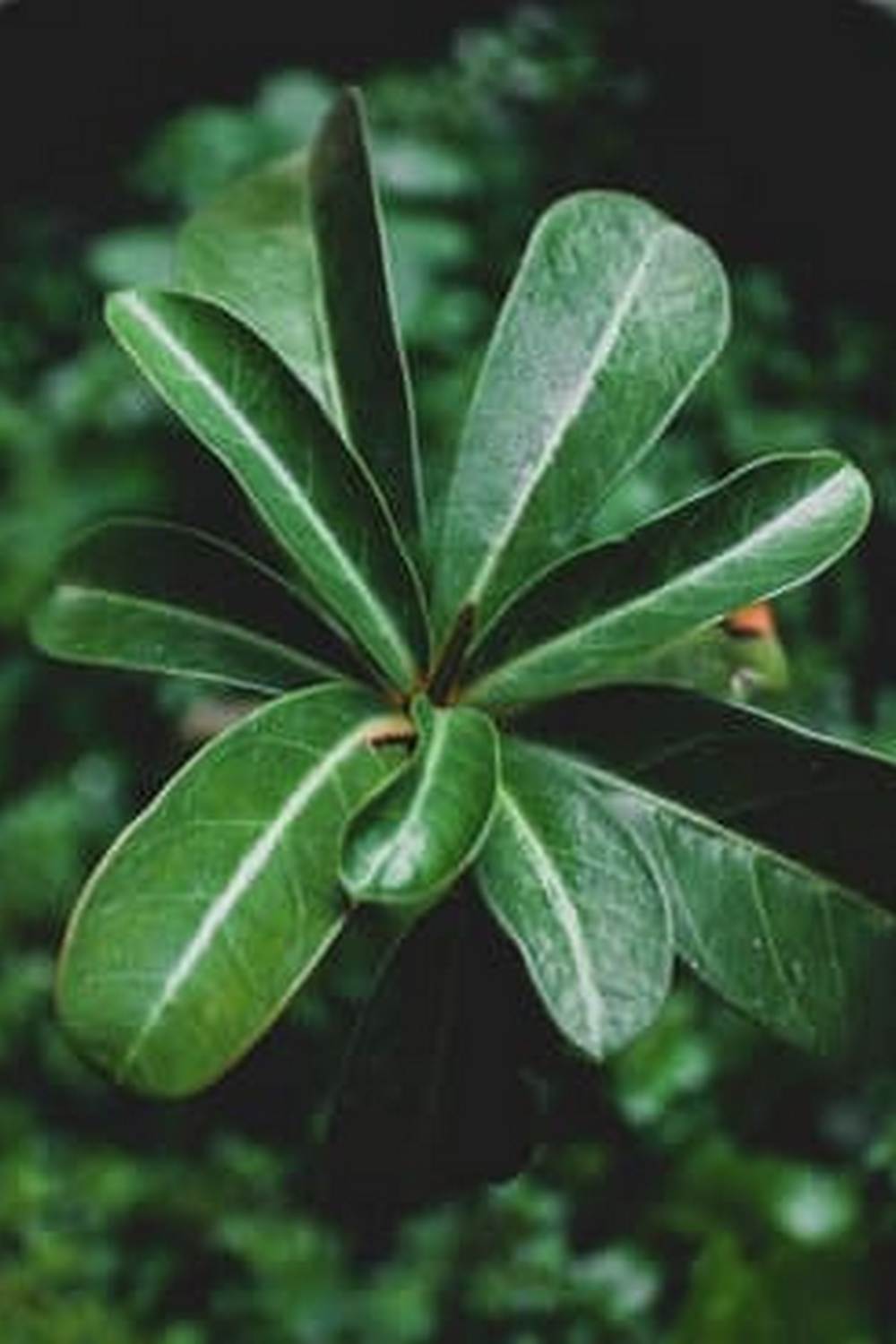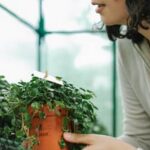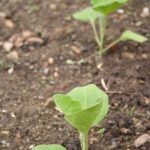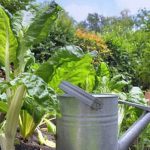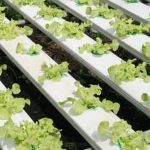Are you looking to start your own vegetable garden but lack the space for traditional gardening? Vegetable gardening planters could be the perfect solution for you. With the right planters, you can grow a variety of vegetables right on your patio, balcony, or even indoors. In this article, we will explore everything you need to know about vegetable gardening planters, from choosing the right planters to troubleshooting common issues.
When it comes to vegetable gardening planters, there are many options to choose from. From raised beds to hanging baskets and window boxes, the possibilities are endless. Choosing the right planters for your vegetable garden is essential for creating a successful and thriving garden. We will delve into the different types of planters available and how to select the best ones for your specific needs.
In addition to discussing the different types of planters, we will also explore the best vegetables to grow in planters. Not all vegetables thrive in container gardens, so it’s important to choose wisely. We will provide recommendations for easy-to-grow vegetables that are well-suited for planting in containers. Whether you’re a beginner gardener or an experienced enthusiast, this article will equip you with the knowledge needed to start your own flourishing vegetable garden in planters.
Choosing the Right Planters for Your Vegetable Garden
Material
When choosing planters for your vegetable garden, consider the material from which they are made. Common options include plastic, terracotta, wood, and metal. Each material has its advantages and disadvantages. For example, plastic planters are lightweight and affordable but may not be as aesthetically pleasing as other materials. On the other hand, terracotta planters are breathable and can help prevent overwatering, but they may be more prone to cracks during freezing temperatures.
Size
The size of your planters is another crucial factor to consider. Larger planters can accommodate more substantial plants or multiple vegetables, while smaller ones are more suitable for compact spaces or individual crops such as herbs. Keep in mind that larger planters also hold more soil and water, which can be beneficial for certain vegetables that require ample root space and consistent moisture.
Drainage
Proper drainage is essential for the health of your vegetable plants. Look for planters with drainage holes at the bottom to prevent waterlogged soil, which can lead to root rot and other issues. Inadequate drainage can be especially problematic for vegetable gardening planters since many vegetables are susceptible to overwatering. Additionally, consider using pot feet or placing a layer of gravel at the bottom of the planter to improve airflow and drainage.
Overall, when choosing the right planters for your vegetable garden, take into account the material, size, and drainage capabilities to provide an optimal growing environment for your plants. By selecting appropriate planters that meet the needs of your specific vegetables, you can set yourself up for a productive and bountiful harvest from your vegetable gardening planters.
The Best Vegetables to Grow in Planters
When it comes to vegetable gardening, not everyone has access to a spacious backyard or a traditional garden plot. However, that doesn’t mean you can’t enjoy the satisfaction of growing your own fresh produce. With the use of vegetable gardening planters, even those with limited space can cultivate a bountiful garden right on their patio, balcony, or rooftop.
Compact Vegetables
One of the keys to successful vegetable gardening in planters is choosing the right vegetables to grow. Compact varieties of vegetables are ideal for small spaces and planters. These include cherry tomatoes, bell peppers, lettuce, spinach, and radishes. These vegetables don’t require a lot of room for their root systems and can thrive in the confined space of a planter.
Herbs
In addition to compact vegetables, herbs are also excellent choices for planting in containers. Herbs such as basil, parsley, chives, and mint are not only space-saving but also add flavor and aroma to your cooking. They can be grown alongside other vegetables or even on their own in smaller pots.
Root Vegetables
Contrary to popular belief, root vegetables like carrots and beets can also be grown in planters. The key is to choose shorter varieties that are suitable for container growing. With proper soil depth and adequate watering, these root vegetables can flourish in planters as well.
By choosing the right vegetables for your planters, you can enjoy a bountiful harvest even in limited spaces. Whether it’s compact veggies, herbs, or select root vegetables, there are plenty of options to explore when it comes to vegetable gardening in planters.
Tips for Successful Vegetable Gardening in Planters
When it comes to successful vegetable gardening in planters, there are a few key tips and tricks to keep in mind. Whether you’re a beginner or experienced gardener, these tips will help ensure that your plants thrive and produce a bountiful harvest.
First and foremost, it’s essential to choose the right size planters for your vegetables. Different vegetables have varying root depths and space requirements, so be sure to research each vegetable you plan to grow and provide an appropriately sized planter. Additionally, make sure your planters have adequate drainage holes to prevent waterlogged soil, which can lead to root rot and other issues.
Another crucial tip for successful vegetable gardening in planters is to use high-quality potting mix. Avoid using garden soil, as it tends to become compacted in containers and may not provide the necessary nutrients for healthy plant growth. Look for a potting mix specifically formulated for container gardening, which will provide proper aeration and drainage for your plants.
Finally, consider the placement of your vegetable gardening planters. Most vegetables require at least six hours of sunlight per day, so be sure to place your planters in a sunny location. If you’re limited on space or sunlight, consider investing in lightweight or hanging planters that can be easily moved throughout the day to maximize sun exposure for your plants. By following these tips, you’ll be well on your way to successful vegetable gardening in planters.
Understanding the Importance of Drainage in Planters
When it comes to vegetable gardening in planters, one of the most crucial factors to consider is proper drainage. The importance of good drainage cannot be overstated, as it directly affects the health and growth of your plants. Without adequate drainage, excess water can accumulate in the soil, leading to root rot, mold, and other problems that can ultimately kill your vegetable plants.
One way to ensure good drainage in your vegetable gardening planters is to choose the right type of planter. Porous materials such as terra cotta or wooden planters allow for better air circulation and water drainage compared to plastic or metal planters. Additionally, make sure that your planters have drainage holes at the bottom to allow excess water to escape.
Another important aspect of understanding the importance of drainage in planters is the type of soil you use. A well-draining potting mix specifically formulated for container gardening is essential for maintaining proper moisture levels and preventing waterlogged soil. Adding a layer of gravel or broken pottery pieces at the bottom of your planters can also improve drainage and prevent soil from becoming compacted.
In addition to choosing suitable planters and soil, proper watering techniques are also crucial for maintaining good drainage in vegetable gardening planters. Overwatering is a common mistake that can lead to poor drainage, so it’s important to monitor the moisture levels of the soil and adjust your watering schedule accordingly.
| Vegetable Gardening Planters | Importance of Drainage |
|---|---|
| Proper Drainage | Prevents root rot, mold and other issues |
| Choosing the Right Planter & Soil | Porous materials and well-draining potting mix are essential |
| Watering Techniques | Monitoring moisture levels and avoiding overwatering |
Maintaining and Caring for Vegetable Garden Planters
Once you have set up your vegetable gardening planters, it is important to properly maintain and care for them to ensure the success of your plants. Here are some essential tips for maintaining and caring for your vegetable garden planters:
1. Regular Watering: It is crucial to water your vegetable plants regularly, especially during the dry season. Check the soil moisture level daily and water as needed to keep the soil evenly moist but not waterlogged.
2. Fertilizing: To promote healthy growth and a bountiful harvest, it is recommended to fertilize your vegetable plants every few weeks. Use a balanced fertilizer or organic compost to provide essential nutrients for the plants.
3. Pruning and Trimming: Keep an eye on the growth of your vegetable plants and trim any dead or yellowing leaves to promote new growth. Additionally, prune overcrowded or leggy stems to encourage better air circulation and prevent disease.
4. Pest Control: Regularly inspect your vegetable plants for signs of pests or diseases. Implement natural pest control methods such as handpicking insects, using insecticidal soap, or companion planting with pest-repelling herbs.
5. Soil Maintenance: Over time, the soil in your planters may become compacted or depleted of nutrients. Refresh the soil annually by adding in compost or organic matter to improve fertility and texture.
By following these maintenance tips, you can ensure that your vegetable garden planters thrive throughout the growing season, providing you with a plentiful supply of fresh produce right at your fingertips.keyword: vegetable gardening planters.
Creative DIY Planters for Vegetable Gardening
When it comes to vegetable gardening planters, there are plenty of creative and inexpensive DIY options to choose from. Here are a few ideas to consider when looking for unique and functional planters for your vegetable garden:
1. Upcycled Containers: Look around your house for old buckets, crates, or even tires that can be repurposed into planters. Not only is this an eco-friendly option, but it also adds a touch of personality to your garden.
2. Vertical Gardens: Utilize vertical space by creating a DIY planter wall using wooden pallets or hanging shoe organizers. This is an excellent way to maximize space and grow a variety of vegetables in a small area.
3. Raised Bed Planters: Constructing raised bed planters from materials such as untreated wood or cinder blocks not only adds visual interest to your garden but also provides many benefits such as improved drainage and soil quality.
4. Terracotta Pots: Get creative with traditional terracotta pots by painting them in vibrant colors or adding decorative accents. The versatility of terracotta pots makes them an ideal choice for growing herbs, peppers, and tomatoes.
5. Kiddie Pools and Tubs: For larger scale gardening projects, consider repurposing kiddie pools or large tubs into vegetable planters. These containers offer ample growing space and can be easily moved around the yard as needed.
By incorporating these DIY planter ideas into your vegetable gardening efforts, you can save money while adding a personal touch to your outdoor space. Whether you have limited space or simply want to add visual interest to your garden, these creative options will help you achieve a successful and enjoyable growing experience while using vegetable gardening planters.
Troubleshooting Common Issues in Vegetable Garden Planters
When it comes to vegetable gardening in planters, there are a few common issues that gardeners may encounter. Understanding how to troubleshoot these problems can help ensure a successful and bountiful harvest from your vegetable garden planters.
One common issue with vegetable garden planters is overwatering or underwatering. Overwatering can lead to root rot and other diseases, while underwatering can result in stunted growth and poor yield. To troubleshoot this issue, it’s important to monitor the moisture levels in the soil regularly and adjust your watering schedule as needed. Consider using a moisture meter or simply sticking your finger into the soil to determine if it’s time to water.
Another common problem in vegetable garden planters is nutrient deficiencies. Since planters have limited space for roots to spread out and access nutrients, it’s important to regularly fertilize your vegetables. Troubleshooting this issue involves identifying which specific nutrients your plants may be lacking and choosing a fertilizer that addresses those deficiencies. Additionally, consider using slow-release fertilizers or organic fertilizers to provide a steady supply of nutrients to your plants.
Pest infestations can also be a challenge when gardening in planters. Troubleshooting this issue involves regularly inspecting your plants for signs of pests such as chewed leaves or visible insects. Depending on the type of pests you encounter, there are various organic and chemical control methods available. Consider using insecticidal soaps, neem oil, or introducing beneficial insects like ladybugs to help manage pest infestations in your vegetable garden planters.
By understanding how to troubleshoot these common issues in vegetable garden planters, you can ensure that your plants thrive and produce a successful harvest. Paying attention to watering practices, providing adequate nutrients, and managing pest infestations will ultimately lead to a fruitful and rewarding gardening experience with vegetable garden planters.
Conclusion
In conclusion, vegetable gardening in planters offers numerous benefits for both beginner and experienced gardeners. The use of planters provides the flexibility to grow a variety of vegetables even in limited spaces such as balconies, patios, or small yards. This method also allows for better control over soil quality, drainage, and sunlight exposure, resulting in healthier and more bountiful crops.
Planters are a practical solution for those with poor soil conditions or physical limitations that make traditional gardening challenging. They also offer the advantage of easy maintenance and the ability to move plants around as needed. Furthermore, vegetable gardening in planters can be a great way to introduce children to gardening, as it can be more manageable for them to have their own small planter to tend to.
By understanding the importance of drainage and choosing the right planters and vegetables for your specific circumstances, you can ensure the success of your vegetable gardening endeavors. From creative DIY options to troubleshooting common issues that may arise, creating a thriving vegetable garden in planters is achievable with proper care and attention. Overall, planting vegetables in containers can bring joy and satisfaction as well as a plentiful harvest of fresh produce right at your fingertips.
Frequently Asked Questions
What Is the Best Container for a Vegetable Garden?
The best container for a vegetable garden is one that provides adequate space for the plants to grow their roots, such as a large planter or raised bed. It’s important to choose a container with good drainage to prevent waterlogging.
What Pots Are Best for Growing Vegetables?
When it comes to pots for growing vegetables, it’s best to opt for large containers that allow for ample root growth. Look for pots made of durable materials like plastic, ceramic, or wood, and ensure they have drainage holes to avoid water buildup.
How Deep Do Planters Need to Be for Vegetables?
Planters for vegetables should be at least 12 inches deep to accommodate the roots of most vegetables. However, deeper planters are preferable for root vegetables like carrots and potatoes, which may require up to 18 inches of depth for optimal growth.

If you’re looking to get into vegetable gardening, or are just looking for some tips on how to make your current garden better, then you’ve come to the right place! My name is Ethel and I have been gardening for years. In this blog, I’m going to share with you some of my best tips on how to create a successful vegetable garden.

